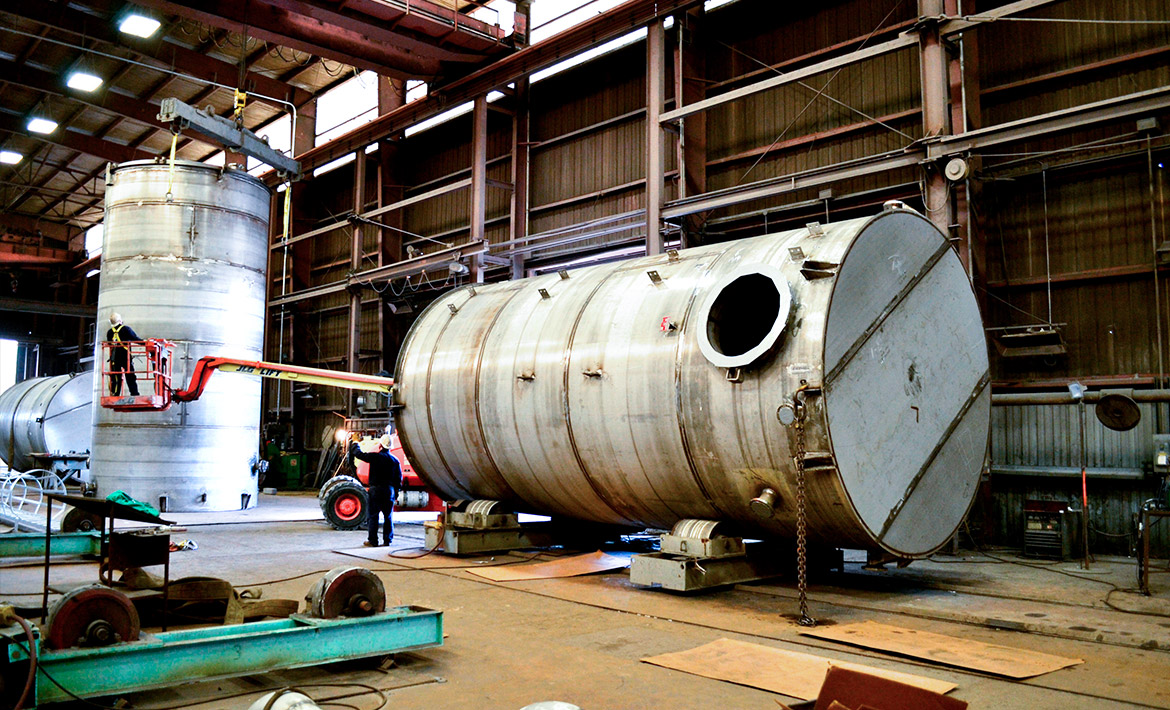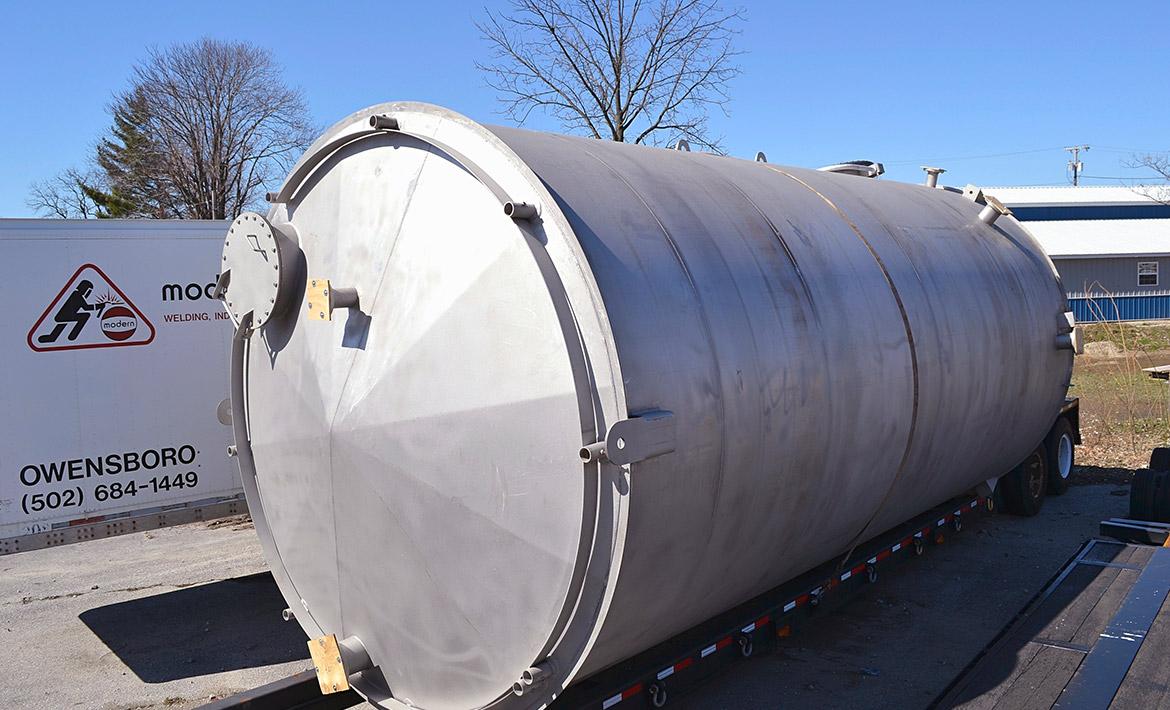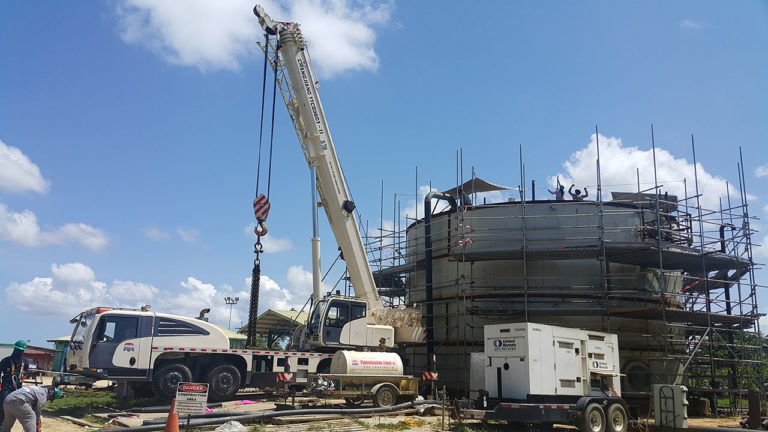Exploring API 650 Welding Inspection Standards for Safe Pressure Vessels
Exactly How Welding Assessment Works: A Comprehensive Overview for Professionals
Welding evaluation plays an important role in ensuring the safety and security and integrity of welded frameworks. It includes an organized method that includes both aesthetic assessment and advanced testing methods. Professionals should acquaint themselves with vital requirements and regulations regulating the sector. Recognizing the common flaws that can arise throughout welding is important. This overview will certainly explore these components thoroughly, supplying understandings right into the procedures that support quality and stability in welding.
Comprehending the Importance of Welding Evaluation
While many may undervalue the importance of welding assessment, it plays an important function in making certain the stability and security of welded frameworks. Reliable welding evaluation determines potential problems and problems that can jeopardize architectural toughness and bring about catastrophic failures. The evaluation process includes numerous methods, such as aesthetic assessments, ultrasonic screening, and radiographic assessments, each contributing to the general analysis of weld quality.
Along with protecting the architectural honesty, welding inspection assures compliance with industry criteria and customer specs. By ensuring that welds meet called for qualities and resistances, assessments aid preserve the dependability and longevity of elements in different applications, from construction to aerospace. A rigorous inspection procedure promotes a culture of top quality and responsibility among welders and manufacturers. Ultimately, welding inspection is not just a procedural action; it is a vital practice that underpins the security and performance of engineered systems throughout diverse markets.
Key Requirements and Laws in Welding Examination
The foundation of reliable welding evaluation hinges on adherence to developed standards and guidelines. Various organizations, such as the American Welding Culture (AWS) and the American National Criteria Institute (ANSI), established forth standards that ensure top quality and safety in welding practices. Secret requirements, such as AWS D1.1 for architectural welding and ASME Section IX for stress vessels, give thorough requirements for welding treatments, credentials, and evaluations. Regulative frameworks, consisting of those from the Occupational Safety and Health And Wellness Management (OSHA), required safety and security practices and worker securities in welding atmospheres. Conformity with these criteria is vital for achieving regular weld top quality and decreasing the risk of failures. Additionally, international standards like ISO 3834 better boost global consistency in welding inspection practices. Specialists have to remain notified regarding these guidelines to ensure that their assessment techniques line up with sector assumptions and lawful demands, consequently guarding both employees and architectural integrity.
Initial Preparation and Visual Inspection Techniques

Effective welding inspection begins with a thorough pre-inspection checklist that assures all needed conditions are satisfied before the real assessment takes place. Following this prep work, visual issue identification plays an essential duty in assessing weld quality, enabling examiners to spot issues such as fractures or inappropriate combination. With each other, these techniques develop the foundation for an effective welding evaluation procedure.
Pre-Inspection Checklist
Before starting any welding evaluation, a detailed pre-inspection list is important to ensure that all required prep work are finished which aesthetic inspection strategies are efficiently utilized. Secret components of this list consist of confirming the welding treatment specification (WPS), making sure all devices is adjusted and in good working condition, and verifying that the assessor possesses the called for accreditations. Additionally, it is crucial to assess any previous evaluation reports and to evaluate the workplace for safety and security threats. The examiner needs to additionally validate that all pertinent documentation, such as material certificates and evaluation records, is easily available. Completing this checklist helps to establish a solid structure for an effective inspection process, boosting the integrity of the outcomes gotten.
Visual Problem Identification
An effective aesthetic problem identification procedure begins with careful preliminary prep work and the application of well established visual assessment methods. Inspectors need to ensure that the welding area is well-lit and tidy, as sufficient visibility is important for spotting defects. A detailed exam of the weld joint's surface permits the recognition of suspensions, such as cracks, damages, or porosity. Inspectors usually use devices like multiplying glasses or mirrors to enhance their sight of hard-to-reach areas. In addition, they ought to be acquainted with the particular welding criteria and guidelines relevant to the project. By sticking to these methods, inspectors can efficiently identify prospective concerns, guarding the stability of the weld and conformity with industry standards.
Non-Destructive Testing Techniques: An Overview
Non-destructive testing (NDT) techniques play a crucial function in the welding assessment procedure by making sure the integrity and dependability of bonded frameworks without triggering any kind of damage (API 650 Welding Inspection). These strategies allow inspectors to review the quality of welds while preserving the parts being analyzed. Typical NDT approaches consist of ultrasonic testing, view radiographic screening, magnetic fragment screening, and dye penetrant testing, each offering special benefits
Ultrasonic screening employs high-frequency audio waves to find inner imperfections, while radiographic testing makes use of X-rays or gamma rays to picture the inner structure of welds. Magnetic bit screening exposes surface and near-surface defects by applying a magnetic field and iron particles to the weld location. Color penetrant screening highlights surface-breaking defects with the application of a colored dye. Together, these NDT methods supply web vital insights into weld quality, enabling specialists to make informed decisions regarding safety and conformity in welding applications.
Typical Flaws and Their Effects
Determining typical problems in welded joints is important for maintaining architectural honesty and safety. Numerous defects can occur during the welding process, each lugging prospective ramifications for the overall efficiency of the framework. Porosity, defined by small gas pockets within the weld, can damage the joint and endanger its load-bearing capability. Cracks might establish due to thermal tension or inappropriate cooling, resulting in potential failing under tension. Insufficient combination happens when the weld steel does not completely bond with the base product, leading to weak joints that may not hold up against designated lots. Damaging, where the base metal is deteriorated, can also lower the efficient cross-section of the weld. Additionally, extreme support can create stress and anxiety concentrations that can lead to failing. Acknowledging these problems without delay enables for rehabilitative procedures, guaranteeing the long life and reliability of bonded structures in critical applications.
Tools and Equipment Made Use Of in Welding Assessment
Effective welding internet evaluation counts on a variety of specialized devices and tools to guarantee the high quality and honesty of welded joints. Essential tools consist of visual assessment devices, such as multiplying glasses and borescopes, which permit inspectors to closely analyze welds for surface area problems. Non-destructive testing (NDT) techniques, such as ultrasonic screening, radiographic screening, and magnetic particle testing, are fundamental for determining inner flaws without damaging the material.
Measurement tools, including calipers and weld assesses, assist assess dimensions and determine conformity with requirements. In addition, hardness testers examine the mechanical homes of welded joints. Individual protective tools (PPE) is also critical, safeguarding the safety and security of inspectors while operating in possibly unsafe settings (API 650 Welding Inspection). Each device offers a specific objective, jointly boosting the efficiency of welding evaluation and adding to the dependability of completed projects
Regularly Asked Concerns
What Credentials Are Needed to Come To Be a Welding Inspector?
To become a welding examiner, people generally need appropriate accreditations, such as AWS CWI or CSWIP, along with experience in welding procedures, design principles, and expertise of assessment techniques, safety and security requirements, and appropriate codes.
Exactly How Commonly Should Welding Inspections Be Carried Out?
Welding inspections need to be conducted regularly, preferably at various task phases, including pre-weld, during-weld, and post-weld. Frequency might also depend upon industry requirements, task specs, and the intricacy of the welds involved.
Can Welding Defects Be Fixed After Inspection?

Yes, welding flaws can frequently be fixed after assessment. Depending on the extent and kind of issue, ideal methods such as remodeling or additional welding may be employed to restore structural stability and safety compliance.
What Industries Require Routine Welding Inspections?

Various markets, including construction, manufacturing, aerospace, and automobile, need normal welding inspections - API 650 Welding Inspection. These examinations assure adherence to safety criteria and quality assurance, minimizing risks related to structural integrity and functional efficiency in welded components
How Do I Pick a Welding Examination Service?
To select a welding evaluation service, one should think about credentials, experience, accreditations, and market credibility. In addition, reviewing client evaluations and guaranteeing the service meets relevant requirements can assist assure top quality assessments and reputable results.

While several may undervalue the importance of welding examination, it plays an essential role in making certain the honesty and security of bonded structures. Key requirements, such as AWS D1.1 for architectural welding and ASME Section IX for pressure vessels, give extensive standards for welding procedures, qualifications, and examinations. Reliable welding evaluation begins with a comprehensive pre-inspection list that assures all essential conditions are fulfilled before the actual inspection takes location. Prior to commencing any welding evaluation, a complete pre-inspection list is necessary to assure that all essential prep work are finished and that visual evaluation methods are efficiently utilized. Non-destructive screening (NDT) approaches play an essential role in the welding inspection process by making sure the stability and dependability of welded frameworks without triggering any damages.